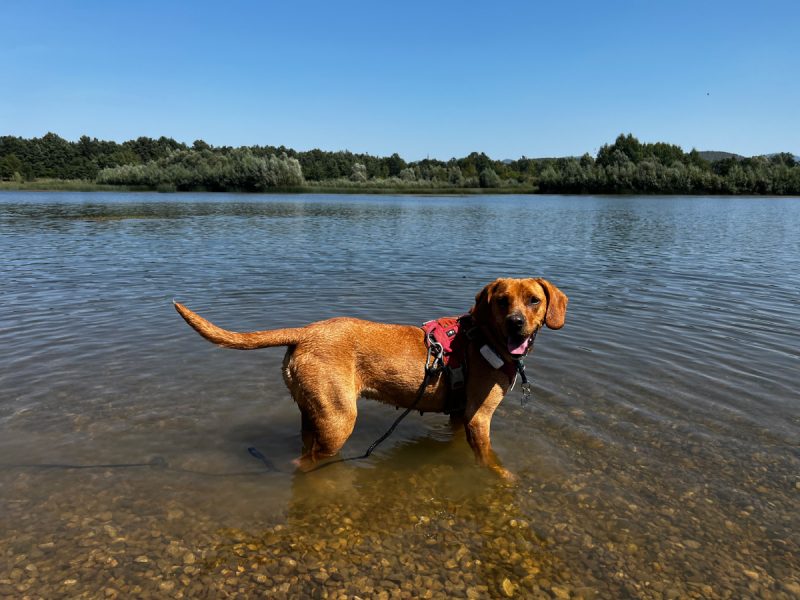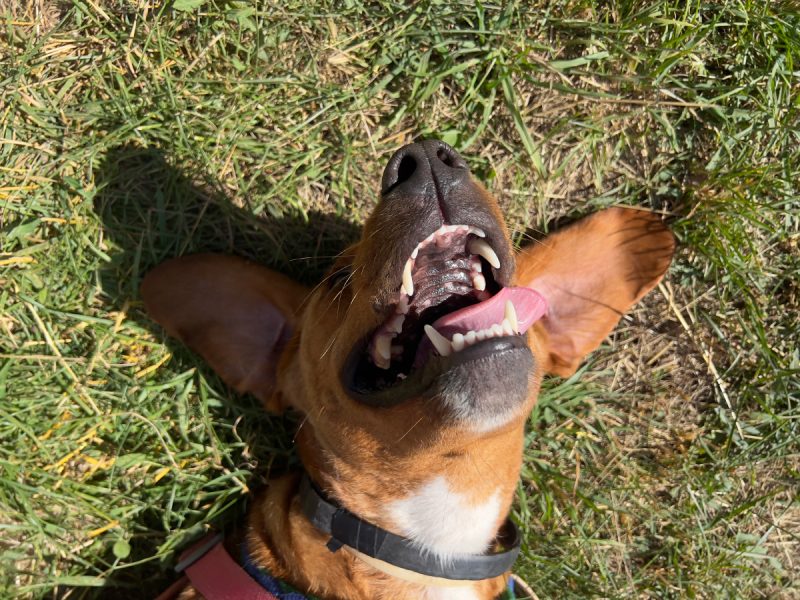The post How I Rescued A Greek Stray Dog: Hela’s Story by Dr. Maja Platisa DVM MRCVS (Veterinarian) appeared first on Dogster. Copying over entire articles infringes on copyright laws. You may not be aware of it, but all of these articles were assigned, contracted and paid for, so they aren’t considered public domain. However, we appreciate that you like the article and would love it if you continued sharing just the first paragraph of an article, then linking out to the rest of the piece on Dogster.com.
Hi, I’m Dr. Maja! Read my introduction to learn more about me and my two crossbreed dogs, Lava and Hela.
When I went to the island of Kefalonia in Greece in 2022 to do a TNR (Trap Neuter Release) programme, little did I know that I would be coming home with another dog. Having had one dog at the time, and that’s Lava who is a handful, to say the least, I had no plans of getting another dog. But it seems like there was another plan set in motion, which I was fully unaware of. Some may call it fate.

How Hela Was Found
It was just another day at the field clinic. While we were waiting for stray and feral cats and owned dogs to be brought in for neutering, one of the local volunteers came back with an unexpected story. She was walking in a nearby village when she came across a very skinny and clearly abandoned dog tied to a tree. The dog had no food or water and was skin and bone. I couldn’t believe this was still happening in modern-day Greece. We talked about what to do, as all the volunteers have many pets they took in over the years, and there was an overcrowded local shelter. Despite not having an immediate solution for where to take the dog or who could adopt it, we decided to go back for her, as we just couldn’t leave her in those conditions.

Logistics of Dog Rescue
We picked her up in the afternoon on the same day. There were no people around who showed any interest in this poor pooch and no one claimed her. She had no identification tags or microchips. I do wonder sometimes whether her owner died and she got forgotten. Or maybe, because she had skin lesions and clear signs of malnutrition, her “owner” couldn’t care for her, or chose not to. We will never know. As soon as I got her on a lead, she happily pulled and got into the car with no fear. As if she was relieved to leave.

For the next few days, we kept the dog with us in the field clinic, discussing what we should do next. I started to realize that this dog would not have a much better chance at life if she ended up in a local shelter, from where it’s unlikely she will get adopted, being an adult dog with underlying health issues. We confirmed her malnutrition, at least partly, and her skin lesions were due to a disease called Leishmania, commonly encountered in the Mediterranean countries. As the dog lived outside, and had no treatment against parasites, she was exposed to sandflies, a vector for this parasitic disease. It’s treatable but unfortunately not curable, but luckily, many dogs will still live a long and happy life.
And, that’s when I made a decision to give this dog a home. There was no other option really, and I wouldn’t be able to live with myself, knowing she would stay behind.
Hela, the Meaning Behind the Name
For a little while, I thought about the name for her, and I didn’t have many ideas. I didn’t know her that well, so I couldn’t picture a name that would suit her best. Still, although she didn’t have a very nice time in Greece, I wanted a name that draws origins from mythology, and one to show strength and perseverance.

The name “Hela” came to mind. Though it’s not from Greek mythology, it suddenly felt right. It was a name given to the Goddess of Death, and although it sounds morbid when you put it this way, it’s also a name that radiates strength and power. And this dog has been through hell and came out the other side, stronger and happier.
Finally, A “Smile” on Her Face
Dogs use their body language to tell us how they’re feeling. Sometimes, their faces can appear as if they’re smiling, although in many cases, this is us anthropomorphising our dogs’s expressions. Looking back at Hela’s pictures from Greece when we first found her and drove her to the local vet, and now, when she’s living with my other dog and a cat, both of whom she loves, going on adventures, learning how to swim, how to trust me, and realizing she found a place to call her home, there is a clear difference.
It may not be a smile, but there is a clear spark in her eyes, a significant change in her body language, that radiates happiness, curiosity, and excitement. There is even, at times, an expression on her face that comes as close to a smile as possible.

- Read her previous article: Lava the Dog: Beginning of the End
The post How I Rescued A Greek Stray Dog: Hela’s Story by Dr. Maja Platisa DVM MRCVS (Veterinarian) appeared first on Dogster. Copying over entire articles infringes on copyright laws. You may not be aware of it, but all of these articles were assigned, contracted and paid for, so they aren’t considered public domain. However, we appreciate that you like the article and would love it if you continued sharing just the first paragraph of an article, then linking out to the rest of the piece on Dogster.com.
